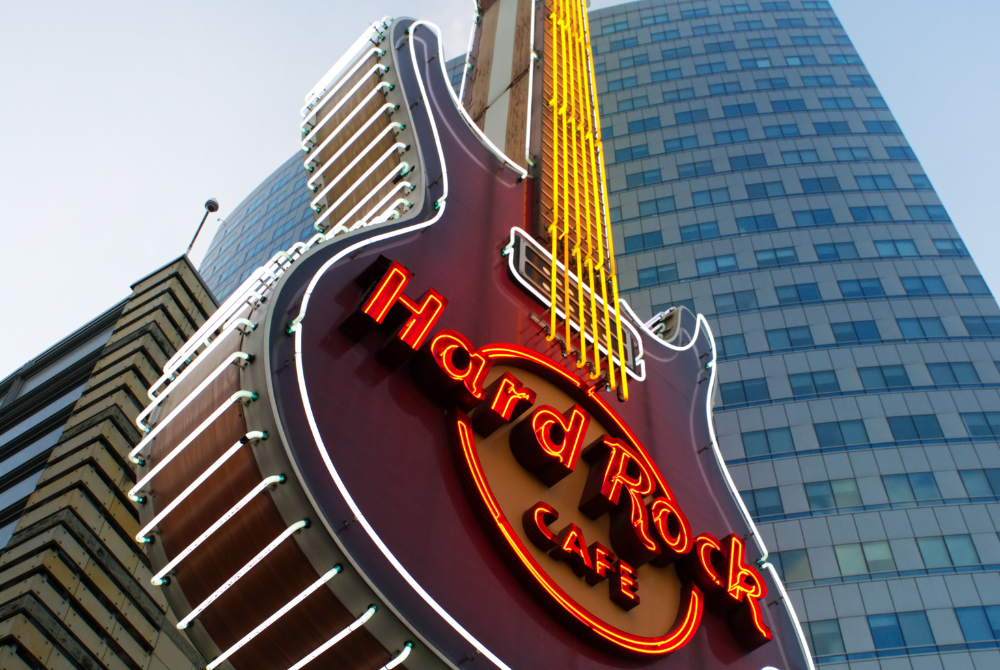When we talk about trademarks, we often address concrete items that can be registered, like logos, symbols, words, or phrases. But what about the general “look and feel” or shape of a place or product?
This protectable aspect of trademark law – known as “trade dress” – can certainly serve a distinctive purpose in commercial identification, but its validity as a registered trademark can prove hazier to define. We see this highlighted in two parallel Trademark Trial and Appeal Board (TTAB) cases. The hotel owners tried to register the shape of their hotel building – but only one was awarded protection for distinctive trade dress.
Why is that? We will go into the details below.
A Tale of Two Hotel Designs
The two hotels in question are the Hilton Palacio Del Rio in San Antonio, TX and the Seminole Hard Rock Hotel in Hollywood, FL. Each hotel brand tried to gain trade dress protection for its hotel building design, as seen below.
To start with the basics, for a design to gain trade dress protection, it must be:
- Distinctive – recognizably connected to your brand, not confused with another brand’s version
- Non-functional
I will not leave you in suspense on this one. The Hilton Palacio Del Rio’s trade dress was deemed merely non distinctive. The Seminole Hard Rock, with its guitar-shaped hotel, was granted protection.
We have discussed how marks can prove distinctive at length in previous blog articles. Today, we can break down a bit more about the role of non-functionality in trade dress.
Non-Functional… And We Like That?
It may seem puzzling that protectable trade dress needs to be totally non-functional. But the logic goes that, if something serves a functional purpose in a product’s design, it likely needs to be universally available to everyone in that industry. It would not be fair for one business to claim it and prevent anyone else trying to use it.
For instance, a brewery cannot register a trademark for a plain beer tap handle (with nothing special about its design). The beer tap handle is an essential part of the business of running a brewery. All breweries have handles to dispense the beer, and you would not see one and immediately think of a specific company that brews beer. Since the purpose of a trademark is to identify the business that it represents, you can see how a generic beer tap handle would not do that for a particular brewery.
Secondary Meaning
Now, if the brewery had an artist create a distinctively designed tap handle, that could change the story. Customers could start to associate that distinctive tap handle with the business. A beer tap handle starts to mean more than a beer tap handle– with the sight of the distinctive handle, the consumer may feel the (hopefully) positive feelings of visiting the brewery. In this situation, “secondary meaning” has begun to form. And perhaps now you can understand why it is an essential component of registering any trademark.
In the case of the two hotels, you can start to see why the Hilton Palacio del Rio building did not achieve secondary meaning. The Hilton attempted to register separate trade dress protection for two different sides of its building. But a rectangular, multi-storied building with many windows serves the function of a hotel, which needs to temporarily house many people in separate, ideally comfortable, rooms with amenities that match the value of the room. The court concluded that most consumers’ minds would simply think “hotel,” not “Hilton.” They labeled the Hilton building’s trade dress as “non distinctive.”
The Seminole Hard Rock hotel, on the other hand, is recognizable as an individual institution. It has secondary meaning and distinctiveness. The court determined that it was a unique design for a hotel building, not necessary to the function of the hotel.
The Overlap Between Trade Dress and Design Patents
Note that there can be some overlap between design patents and trade dress registration, since both can cover things like buildings, product design, and packaging. How do you know if you need to register a design patent instead of a trademark? Is it ever appropriate to register both?
A design patent may be the best route to go when you want to protect the appearance of something connected to your business without having to prove that it represents your business to consumers. Trade dress encompasses a larger meaning, as a source identifier and that which evokes goodwill.
However, patents only last for a limited amount of time – usually 20 years – before needing to be renewed. Once your business registers its trade dress, as long as you are actively using the trade dress and maintaining the registration, it remains protected. This plays into the answer to the question “Is it ever appropriate to register both?” Yes, in some circumstances, it is a good business strategy to combine different types of intellectual property to overcome the shortcomings of one type of protection.
